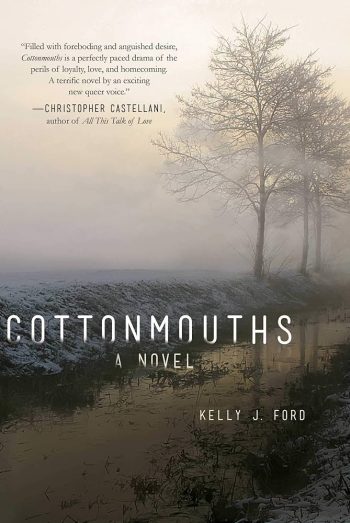This was Drear’s Bluff, nothing bad happened here. People didn’t disappear.
Kelly J. Ford’s novel, Cottonmouths, explores the return home to the small, Southern town of Drear’s Bluff, Arkansas, through the eyes of college dropout Emily Skinner. While bearing the pressure of her community’s expectations, she reconnects with her childhood friend and unrequited first love, Jody, whose new life is full of secrets and lies. As Emily’s life becomes intertwined with Jody’s, she must make decisions on who to trust, what to believe, and how much of herself she is willing to give away for someone she loves.
Ford brings the suffocating fog of Drear’s Bluff to life through her immersive descriptions of Southern culture and people, ranging from whispers of gossip to high school-dropout football stars. While at first introduction, these characters may seem stereotypical and flat, Ford’s plays with expectations as her character development unveils deeper motivations and dynamic relationships.
The plot starts at a slower pace, centered on Emily’s desire to rekindle her relationship with Jody as she struggles to adjust herself back to life in her hometown. This part of the novel was a frustrating read. While the meth lab is discovered early on in the story, Emily is thoroughly guarded from the details of the crime, leaving the initial plot overflowing with unanswered questions from her limited perspective. However, as the questions start to shift from what happened to what really happened, and Emily’s anxiety shifts from others’ expectations to her own mass of lies, the plot begins to gain momentum, and Ford invites readers to distinguish truth from perception. Escalating towards the climax, Ford satisfies readers’ questions and punctures the swelling dread surrounding the meth lab, a mysterious disappearance, and Emily and Jody’s love, exposing a subtle design of perspective and motivation.
As a crime novel, I felt Ford’s play with expectations and truth were extremely effective, as all clues regarding the crime were spread through characters with questionable reliability. I also really enjoyed Ford’s exploration of culprit and victim. As she clouds the identity of her culprit and explores the motivations of her characters, she ultimately blurs the lines between the antagonists and protagonists, even reframing the definition of a perpetrator. Regarding the love story, I really appreciated that Ford’s queer romance was so integral and essential to her plot, rather than an unnecessary supplement. Jody and Emily’s relationship felt nuanced and complex, and elevated the question of motivation with the intersection of romantic and criminal plot. While this was my first experience with Ford’s work, this was a refreshing take on crime literature and queer romance to me, and I recommend this novel to fans of either.
⭐⭐⭐⭐

